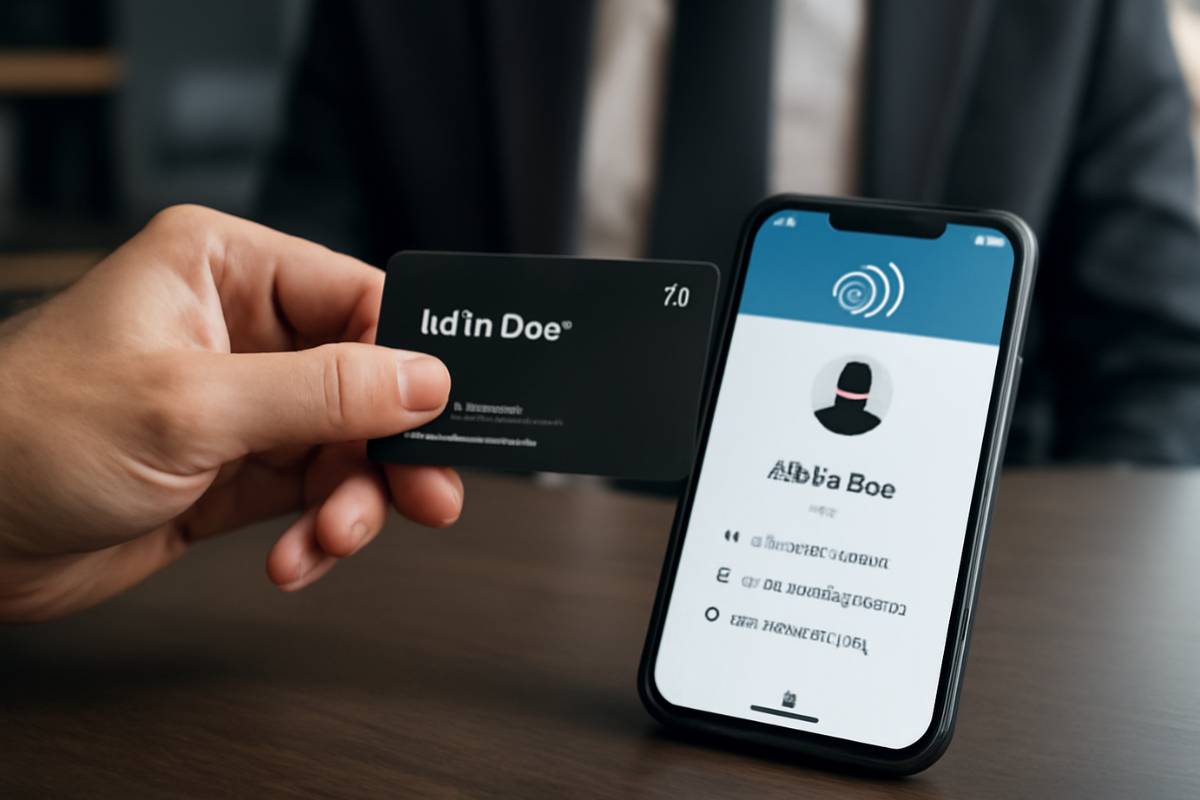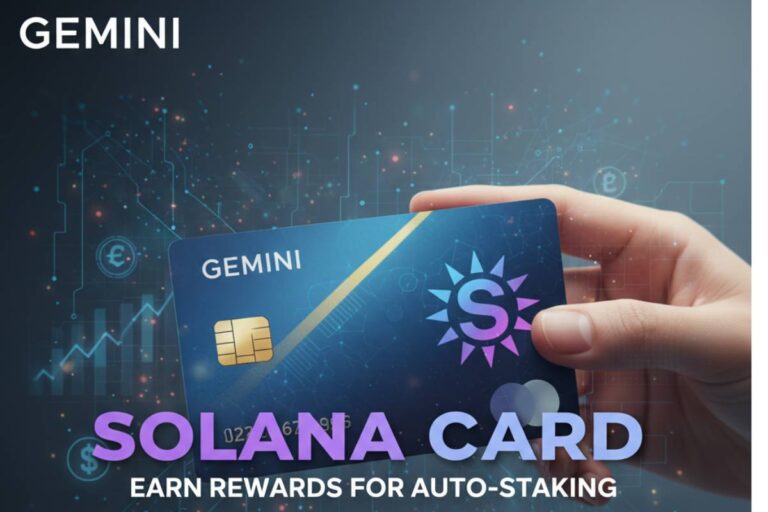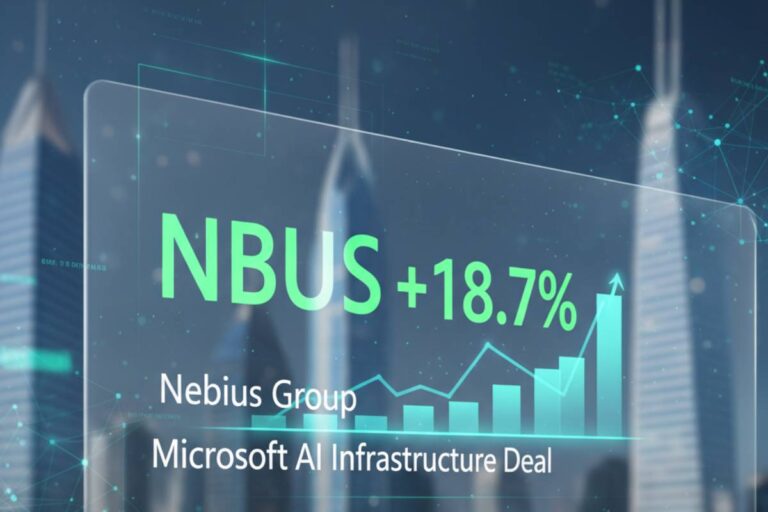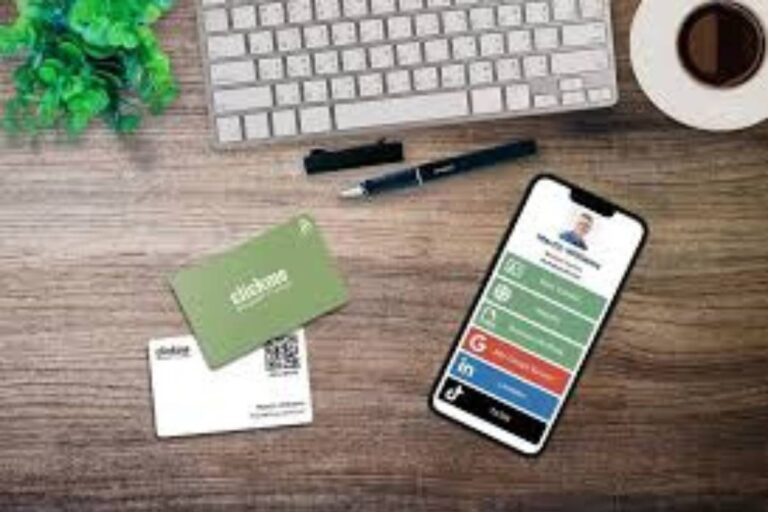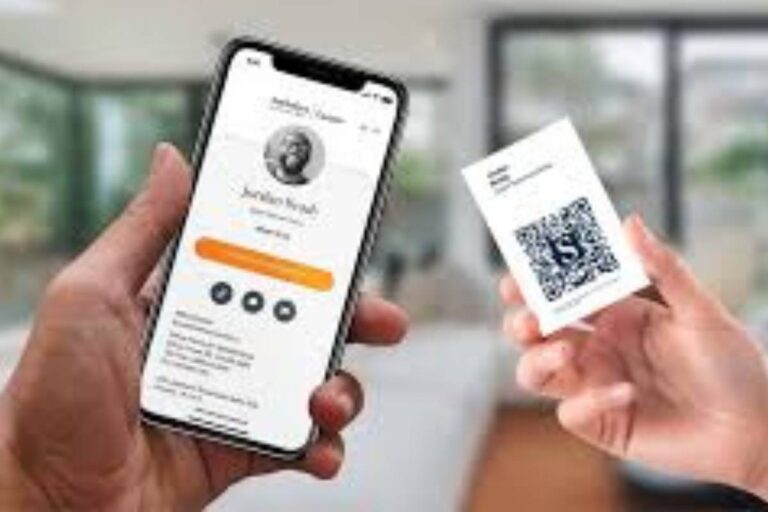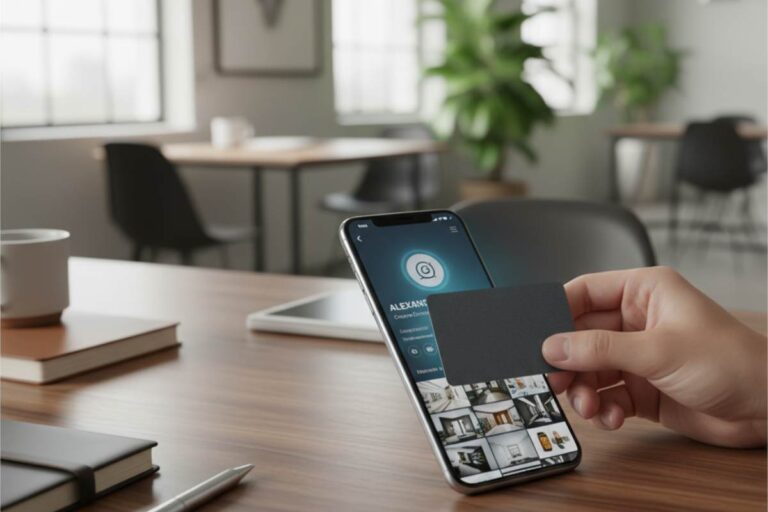Do you remember that stack of business cards? The one that is either in a dusty box on your desk or so deep in your wallet that it has turned into a single, laminated brick of contacts that you don’t remember. Doesn’t it feel like something from a different time? In a world where most of our work is done online, the act of giving someone a small piece of paper seems… well, a little old-fashioned. But networking is more important than ever. So, what’s the answer? A quick tap.
That’s what NFC business cards promise: a technology that’s quietly changing how people see you for the first time. It’s a smooth, modern, and, to be honest, kind of magical way to connect the real world with the digital world. It’s not just about being cool or good with technology; it’s about making a connection that lasts, right away and without any effort.
What is NFC? Understanding the Magic
Before we look at the cards, let’s talk about the engine that makes them work: NFC, or Near Field Communication. You might have already used it without knowing it. Have you ever used your phone to pay for coffee? Or connected your Bluetooth headphones to your phone by just touching them? That’s NFC in action.
It is a part of a larger technology called RFID (Radio-Frequency Identification). RFID is like the long-range talker in the room. It can be used to keep track of things like tolls on highways or inventory in a warehouse. It can work over a distance of several feet. NFC, on the other hand, is the close whisperer. It is meant to work only over a very short distance, usually less than two inches.
This closeness is a feature, not a problem. It needs a deliberate action, like a tap or a close hover, which makes it great for safe and planned actions. It works by using something called magnetic field induction. Here’s a simple breakdown:
- An active NFC device is one that you use, like your smartphone. It has a power source and can make a radio frequency field. There is a passive NFC tag on the NFC business card. This tag doesn’t have a battery or any other way to get power. It’s just a small microchip and an antenna that are waiting. When you put your active phone close to the passive card, the phone’s radio field powers up the chip on the card, which is enough time for it to send its data.
It all happens in a split second. A quick, easy, and safe way for two devices to shake hands.
How an NFC Business Card Works in Real Life
So, you’re at a meeting. You just had a great talk with a possible client. You pull out a sleek plastic, metal, or even wooden card instead of fumbling for a paper card. “Just tap your phone on my card,” you say.
They put their phone next to your card. A message appears on their screen right away. When you tap on that notification, a link opens that takes you to a well-organized digital profile with your name, title, company, phone number, email, website, and social media links. One more tap will let them save your contact information directly to their phone’s address book.
No typing. No mistakes in spelling. No card lost. That’s all. The link is made.
There are a few important parts that make that smooth experience happen:
- The NFC Chip: This is what makes everything work. It is a tiny microchip, smaller than a grain of rice, that can hold a small amount of data. This isn’t a big hard drive; it doesn’t have a lot of space, usually just enough to hold a URL or a digital contact file (VCF).
- The Antenna: A thin wire antenna wraps around the chip. Its job is to catch the energy from the smartphone’s NFC reader and send the chip’s data back.
- The Card Itself: The card material, which can be anything from PVC plastic to high-end metal, bamboo, or recycled materials, has the chip and antenna built into it. The card serves as a strong, branded case for the technology.
The data isn’t kept in a complicated way. Usually, the chip only has one piece of information on it: a URL. This URL takes you to a web page where your full digital profile is stored. This is a great idea because it lets you change your information whenever you want without having to reprogram the card itself. Did you get a new job or a new phone number? Just log in to your profile online, make the changes, and your card will be updated right away.
What Can You Tell Us?
This is where NFC cards really beat out their paper counterparts. A paper card doesn’t move. It has what you wrote on it, and that’s all. An NFC card is a flexible way to access all of your digital devices. There are only a few things you can put on a webpage that limit your options.
Take a look at what you can link to:
- Contact Information: The basics, of course. A VCF (Virtual Contact File) can hold your name, company, title, email address, and phone number. This lets someone save you as a contact right away.
- Websites and Portfolios: Send people straight to your personal website, business page, or online portfolio. This is very useful for artists, designers, photographers, and anyone else whose work is best shown, not just talked about.
- Profiles on Social Media: Connect to your professional social networks, like LinkedIn, Twitter, Instagram, GitHub, or any other. You can just give a direct link instead of saying, “You can find me on LinkedIn under John Smith.”
- Promotional Videos: Picture a potential client tapping your card and seeing a 30-second video of you introducing yourself or showing off a product right away. It has a lot of power and is very personal.
- Calendly and Booking Links: Make it easier to set up a meeting. Your link can take them right to your booking page, where they can set up a follow-up call right away.
- File Downloads: Send a PDF of your company’s most recent report, your resume, a case study, or a catalog of your products.
- Links for Payments and Donations: If you work for yourself, as a consultant, or for a non-profit, you can link directly to a Stripe, PayPal, or Venmo page to get payments or donations.
- Downloading Apps: For tech companies and developers, linking directly to your app on the Apple App Store or Google Play Store is an easy way to get more downloads.
The main advantages of going digital are
It’s not just a new thing to switch to NFC business cards. It gives people and businesses real, strategic benefits. The effect is real, and it goes beyond just looking new.
Leave a lasting first impression
To be honest, networking events can be hard to follow. You meet a lot of people and get a bunch of cards that all look the same. An NFC card cuts through all that noise. The tap itself is a “wow” moment. It’s a little bit of tech magic that makes you and the conversation you just had more memorable right away. “It’s the best icebreaker I’ve ever had,” said one sales director. People’s eyes light up. They want to know, “How does that work?” And all of a sudden, we’re not just talking about business; we’re really interested in what’s going on. “That’s a real link.”
Unmatched Ease of Use and Accuracy
Think about how much friction a paper card has. The person who gets the card has to remember to do something with it later and then type all of their information into their phone by hand, hoping they don’t make a mistake. Most of the time, the card just goes missing. NFC makes it easy and quick to send information. Your contact information goes right where it needs to go: their phone. There’s no work involved and no chance of making a mistake.
Good for the environment and long-lasting
Paper business cards are terrible for the environment. Every year, billions of cards are printed, and a lot of them are thrown away right away. This uses a lot of paper (which comes from trees) and water. You can use an NFC card thousands of times, so you don’t need to buy new paper cards every time. This is a small change that, if everyone does it, will have a big positive effect on the environment.
Long-Term Cost-Effectiveness
A single NFC card may cost more up front than a single paper card, but it lasts much longer, so it is much more cost-effective over time. You don’t have to order new cards every time you change your phone number, get a promotion, or change your brand. You only need to change your digital profile. For big companies that always have to order new batches of cards for their employees, the savings over time can be huge.
Lots of Data and Analytics
This will change the way sales and marketing teams work. You can see how many people are interested in your NFC card because it leads them to a URL. A lot of NFC card platforms have a dashboard that shows you how many times your card has been tapped, what links are getting the most clicks, and even where your card is being scanned. This gives you very useful feedback on which parts of your profile people like, so you can improve your approach. It makes your business card an active marketing tool instead of just a piece of information.
What is the difference between NFC cards and QR codes?
You might be thinking, “This sounds a lot like a QR code.” Why not just put a QR code on my card? It’s a good question because both technologies do the same thing: connect the real world to a digital one. But the user experience and functionality are very different in some important ways.
| Feature | NFC Business Card | QR Code |
| Action | Tap or hover | Scan with the camera |
| Speed | Instantaneous | Requires opening the camera app, aiming, and focusing |
| Aesthetics | The technology is hidden, allowing for clean, minimalist designs. | The code must be visibly printed on the card, impacting the design. |
| Durability | The embedded chip is protected and very strong. | The printed code can be scratched, smudged, or worn down, making it impossible to scan. |
| User Experience | Feels modern, seamless, and almost magical. | Feels more utilitarian and can be clunky, especially in low light. |
| Data Security | Because the range is so short, it is very safe from accidental scans. | However, it can be scanned from a distance, which means there is a small chance of “QRishing” if the code is malicious. |
In the end, the choice between NFC and QR often depends on what you want to do. A QR code works perfectly. It works. But an NFC card is all about making the interaction more premium, easy, and memorable. It’s the difference between saying, “Scan this” and “Just tap here.”
Are NFC business cards safe?
It’s only natural to worry about security when you’re talking about sending data over the air. So, how safe are these cards? The answer is: very safe, mostly because of how they are made.
The fact that NFC has such a short range is its main security feature. For data to be sent, the phone has to be almost touching the card. This gets rid of the chance that someone will be able to read your information from across the room or as you walk by them. The act must be planned.
In practice, most NFC cards are also “read-only.” You can rewrite the chips if you have the right tools and software, but many platforms let you lock your card so that its URL can’t be changed. They wouldn’t be able to get to sensitive data on the chip itself; they could only change the destination URL. Your real profile information (and any analytics) is stored securely on a web server protected by a password.
Getting Started: Your Own Digital Card
Are you ready to switch? There are usually two ways to get your own NFC business card.
The Do-It-Yourself Way
If you’re good with technology and want to save money, you can make your own NFC card. You would have to:
- Buy Blank NFC Tags: You can find these online, and they are not very expensive. They are often small stickers.
- Set up the Tag: You can write a URL right onto the tag with a free NFC programming app on your phone, like NFC Tools.
- Put it on: After that, you can put this NFC tag on a business card you already have, your phone case, or something you made yourself.
This method is cheap and easy to use, but it doesn’t have the professional look and analytics tools that dedicated platforms do. You will also need to make and host your own simple webpage for your profile.
Using a Separate Service
Dozens of companies now specialize in making high-quality NFC business cards that are more professional and have more features. These services have a lot of benefits:
- Premium Cards: You can choose from a lot of different materials, such as smooth PVC, anodized aluminum, carbon fiber, and eco-friendly wood. They take care of printing and putting the chip in.
- Profile Management Platform: They have an online dashboard that is easy to use. You can create and change your digital profile, upload a picture, add all your links, and change the information at any time.
- Advanced Analytics: A lot of platforms give you detailed analytics that show you who is using your card and how.
- Team Management: For companies, these services offer centralized dashboards to keep track of all employees’ cards, make sure the brand stays consistent, and keep track of networking efforts across the entire team.
The Future of Networking is Here
The NFC business card is not just a way to replace paper. It changes the way we think about networking and professional identity in a big way. It recognizes that our work lives are not just a list of qualifications on a piece of paper; they are also a living, breathing digital presence.
The NFC card facilitates a quick, memorable, and highly effective interaction by linking a real-world object to the evolving digital world. It’s a tool that shows the person you’re meeting that you value their time and gives them something useful right away. The time of the dusty, old business card is coming to an end. A tap away is the future of the first impression.








